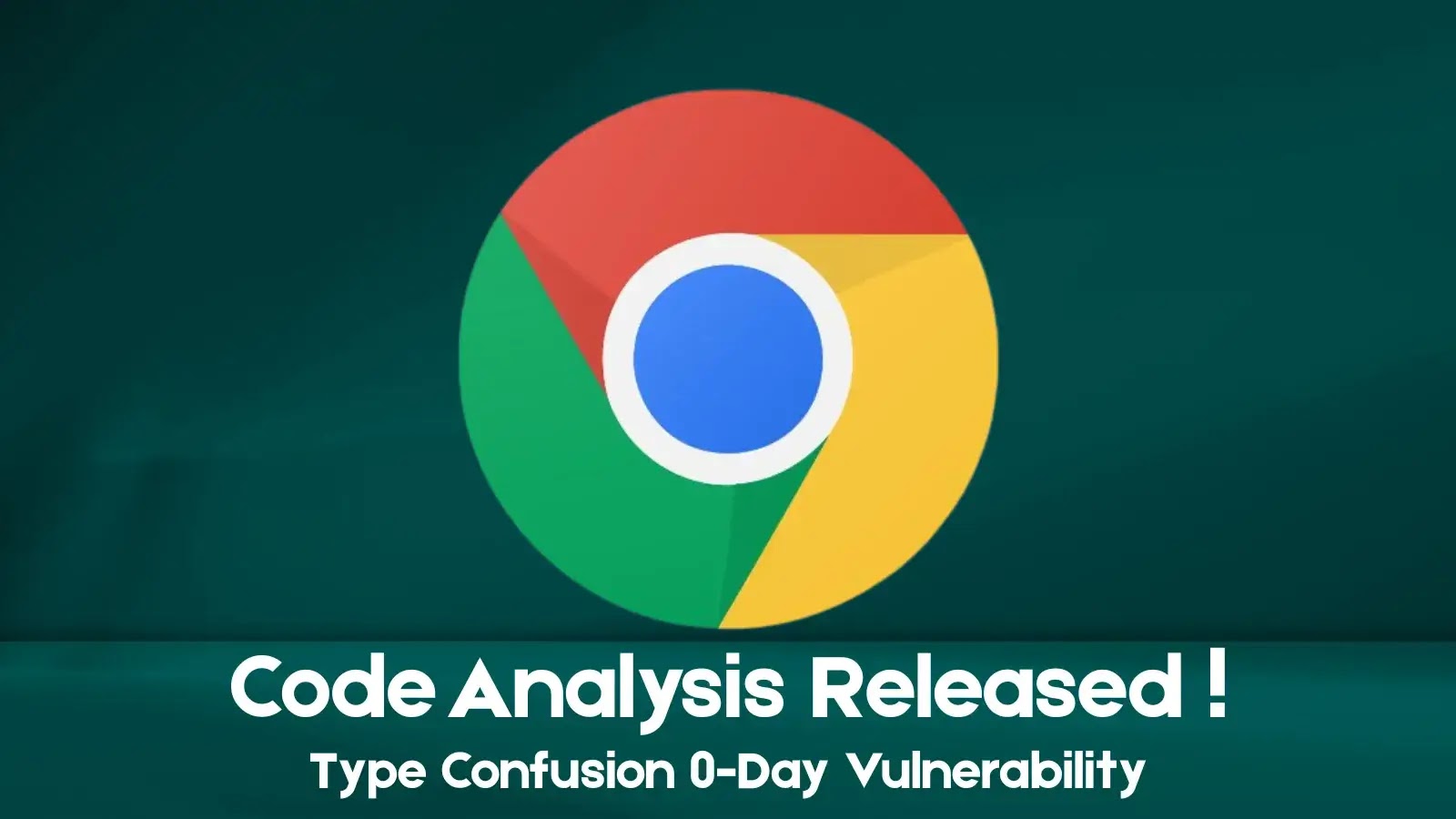Code Analysis Published for Chrome Type Confusion 0-Day Vulnerability
Google Chrome’s V8 JavaScript engine has long balanced speed and security for billions of users worldwide.
On September 16, 2025, Google’s Threat Analysis Group discovered a critical zero-day flaw in the TurboFan compiler component of V8.
Now tracked as CVE-2025-10585, the vulnerability allows attackers to trigger a type confusion condition, corrupt memory in the browser process, and ultimately execute arbitrary code.
Detailed Vulnerability
The CVE-2025-10585 vulnerability scores 8.8 under CVSS v3.1 standards, reflecting its high impact and remote attack vector.
| Attribute | Details |
| CVE Identifier | CVE-2025-10585 |
| CVSS v3.1 Score | 8.8 (High) |
| Affected Products | Google Chrome < 140.0.7339.185 (Windows/Linux/macOS); Chromium-based browsers (Edge, Brave, etc.) |
It affects Chrome versions before 140.0.7339.185 on Windows, Linux, and macOS, as well as other Chromium-based browsers such as Microsoft Edge and Brave.
Exploits are in the wild, reportedly used by state-sponsored actors and commercial spyware operators to steal cryptocurrency and sensitive data.
A simple visit to a malicious webpage can trigger the flaw, making the risk urgent for all users who have not yet updated.
At the heart of this issue is a type confusion error in V8’s inline cache mechanism. Attackers craft a JavaScript Proxy object whose property traps return a floating-point array instead of a primitive number.
When the engine optimizes repeated operations in a loop, it assumes each result matches a numeric type. The unexpected array corrupts the inline cache and misdirects memory pointers.
This manipulation leads to heap overflows or use-after-free conditions that give attackers arbitrary read and write capabilities.
Google has released a patch in Chrome 140.0.7339.185. All users should update immediately by visiting chrome://settings/help or using the browser’s built-in update mechanism.
Below is the core proof-of-concept JavaScript snippet and accompanying pseudo-assembly illustrating the type-confusion trigger in V8’s TurboFan compiler:
// Hypothetical PoC Snippet (Adapted from Similar V8 Type Confusions)
let victim = new Proxy(,
get(target, prop)
if (prop === Symbol.toPrimitive)
// Type Mismatch: return a float array instead of a number
return () => [1.1, 2.2, 3.3];
return Reflect.get(...arguments);
);
// Optimization trigger loop
for (let i = 0; i < 10000; i++)
let x = +victim; // ToNumber() call triggers type confusion
if (x.length) // Numbers don’t have length; array treated as number
// Arbitrary memory read via out-of-bounds access
console.log(x[0]); // Heap address leak
As an extra precaution, organizations can enforce endpoint protection rules to block untrusted scripts and monitor network traffic for suspicious Proxy-style payloads.
Disabling JavaScript on unknown sites provides temporary mitigation but may break benign functionality.
Security teams must scan logs for repeated ToNumber calls on proxy objects and watch for signs of inline cache tampering.
CVE-2025-10585 highlights the delicate balance between performance optimizations and secure browser design.
Developers and security professionals should review similar type inference code in other JIT engines and run targeted fuzz tests to detect comparable flaws.
With proof-of-concept code likely to emerge soon, staying current with patches and monitoring threat feeds will be essential to prevent further exploitation.
Find this Story Interesting! Follow us on LinkedIn and X to Get More Instant Updates.














Post Comment